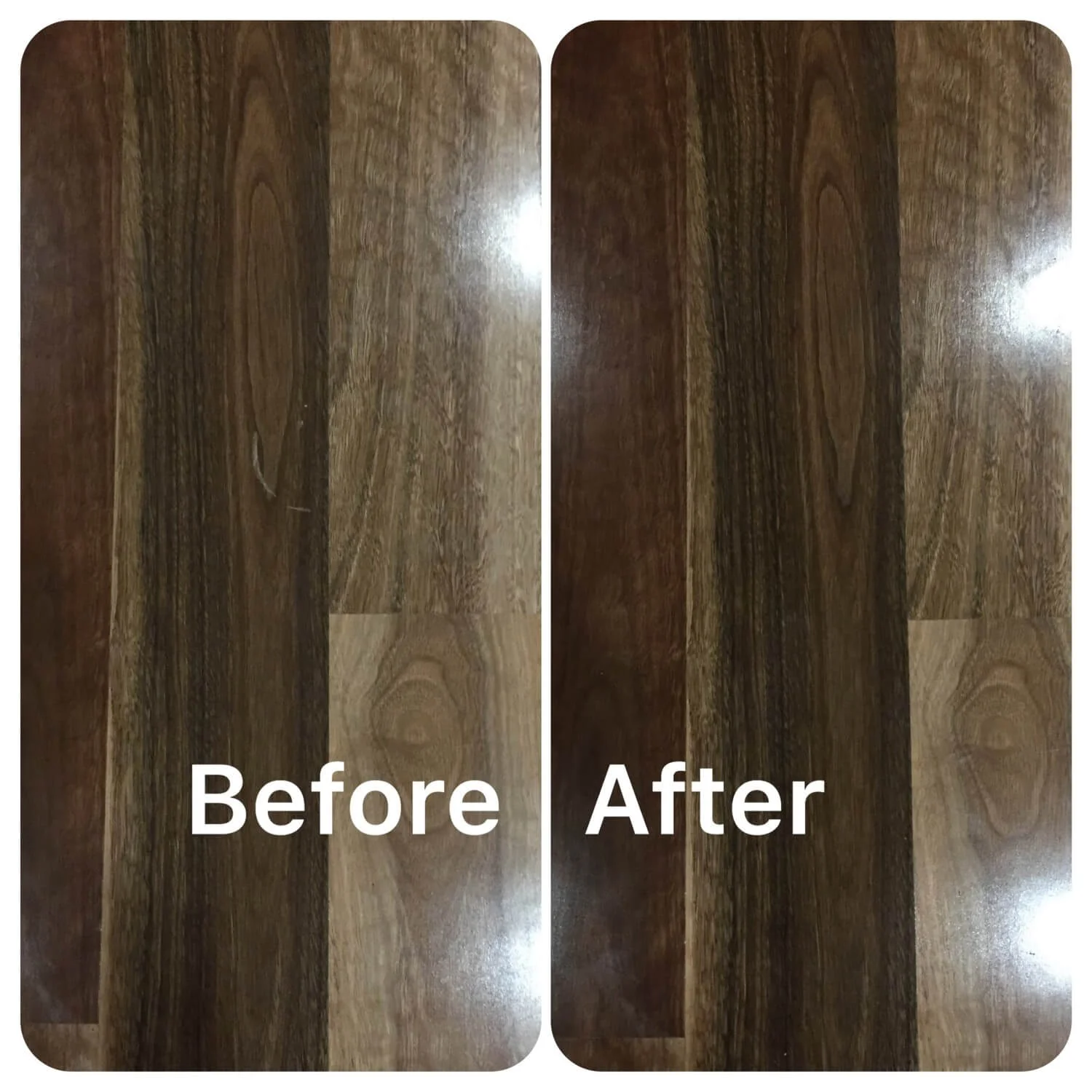Hard Surface Repairs Solutions and Options
Common Questions and Answers
PLEASE CLICK ON THE QUESTION TO READ THE ANSWER
Can you repair furniture surfaces?
YES. The König German technology and high-grade products are tailored to heavy traffic areas and to different surfaces like solid wood, veneers, and artificial (hard) surfaces. Damage to furniture surfaces can occur anywhere — at the retailer, in transit, during unpacking and/or assembly, and last but not least, in the Customer's own home. Unfortunately, damage occurs, but it’s good to know that a local small business can offer a high-quality repair solution at any site of the furniture journey and to any type of surface. Nobody wants to see annoying 'eye-catchers' like scratches, chips, or holes in expensive surfaces. Special repair solutions and products have been designed for different fields of application, some specifically developed for Australian use.
What about flooring and stairs, windows and doors?
Whether oiled, waxed, or solid wood treated with clear lacquer, whether laminate, linoleum, cork, or even vinyl, there is no doubt that there is a large variety of flooring available. Furthermore, the different materials used in modern flooring present themselves to the viewer in completely different designs, from gentle solid shades via striking textures up to deep matt or even high gloss finishes.
Flooring surfaces are heavily used and always exposed to stress. This means high demand for the quality of the repair. There are many types of surfaces for windows and doors — the high-grade products used for repair withstand wind and weather.

Sanitary ceramics, tiles and natural stone too?
YES, even manufactured stone! Holes and chips on tiles, stone, and ceramics can be repaired quickly with high-grade products — with very minimal curing time. The ceramic and resin fillers provide exceptional results when used in difficult cases like tiles on underfloor heating, in showers, with large paving tiles, or for on-site installation when spare tiles are no more available.
Replacement of tiles in a wet area can damage the underlying waterproof membrane — repairs won’t damage that membrane! For sanitary ceramics as well as for granite, marble, and manufactured stone, König has developed special products and repair methods, ensuring very good results.
Can all hard surfaces be repaired?
NO! Faults with underlying surfaces or structures may affect the finish of the completed repair. Faults with underlying structures may require the whole surface to be replaced. Note: Repair is cosmetic, not to original condition. Some repairs may not be possible on some surfaces.
Will this save me money?
YES! Financial savings can be as much as 90% (compared to renovation or replacement), plus a major reduction in waste and environmental impact. All repairs are carried out on-site, with quick turn-around and no inconvenience or mess. For builders and agents, this service will greatly reduce the stress and time taken to resolve snag list issues, resulting in an earlier handover and a greater profit margin. Why renovate or replace when you can repair?
Will the repair be visible?
How do I look after my kitchen bench-top?
Laminates and stone are good durable work surfaces, as are many other surfaces, but they are not bulletproof. Some simple tips for maintaining a good-looking bench are:
- Only use warm soapy water for cleaning your bench.
- DO NOT use strong solvent-based or abrasive cleaners or bleach on your benchtop. Some cleaners can eat into the surface. Abrasive cleaners will wear through the top surface over time.
- Always keep a chopping board handy so as to never cut directly onto your bench.
- Keep something (preferably portable) to rest anything straight from the oven or freezer on.
Why Repair?
Repairing is far cheaper and quicker than replacing, especially when you need multiple trades to attend or the item has faded over time and will stick out if replaced.
Hard Surface Repairs can attend to many snag list items for property management and real estate agents, insurance companies, and builders.

Repairs are cosmetic — in most cases, under normal light and inspection, repairs 'blend in' with the surrounding area and hide the damage. Where the Contractor is requested to perform remedial work on damaged structures, evidence of repairs may be apparent after the completion of the repair. The Contractor may not be able to ascertain the depth of a crack or if a void or cavity is present behind the crack. The repair methods and subsequent costs may alter as a result of any such investigation. We use ‘best practice’ methods — every effort is made to make the repairs blend as closely as possible to the original surfaces and colours. Where we anticipate a problem, you will be advised. High gloss surfaces cannot always be matched, but depending on where the damage is, this may not be an issue. If there are problems of any sort, we appreciate the opportunity to redress the situation.